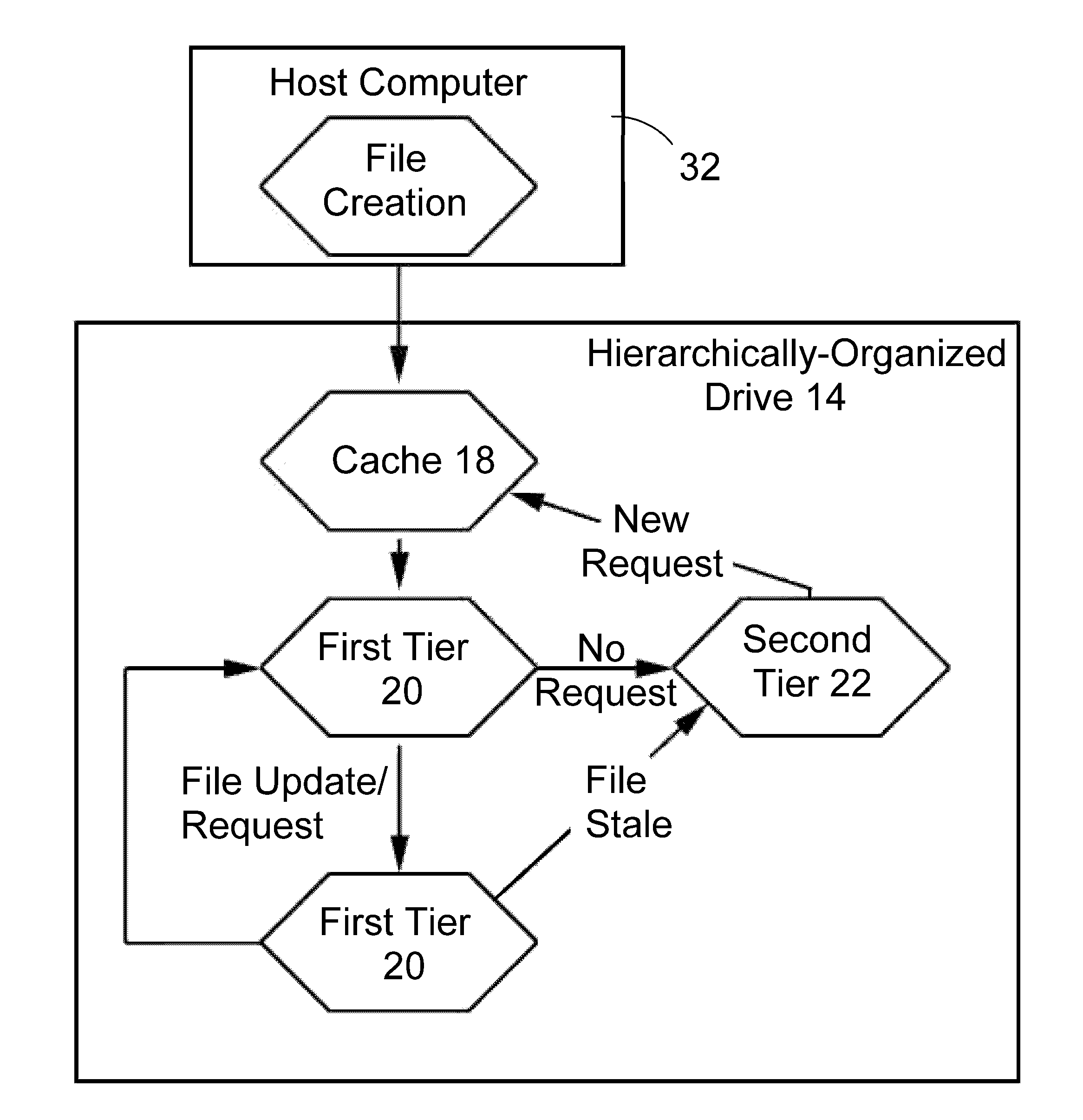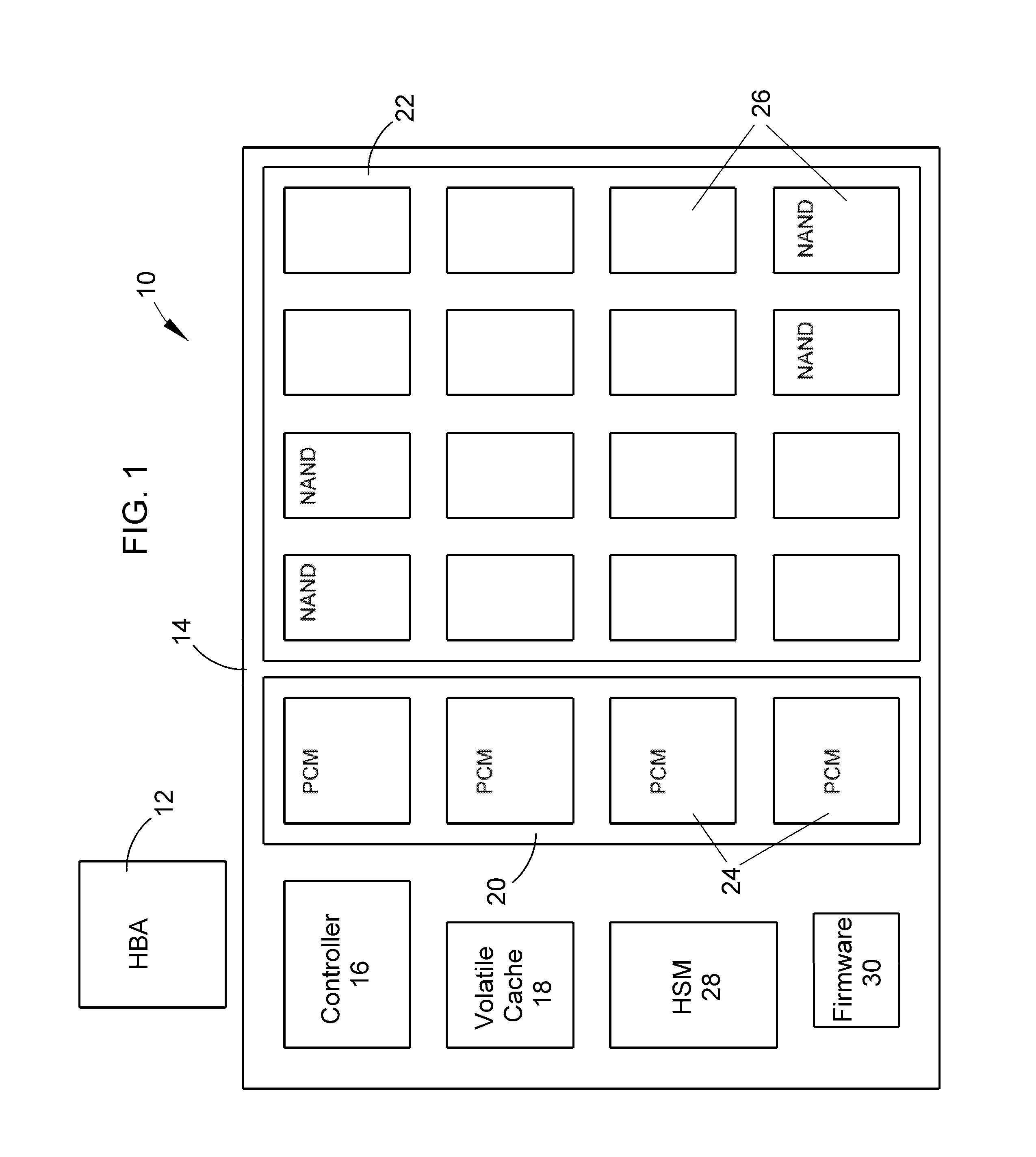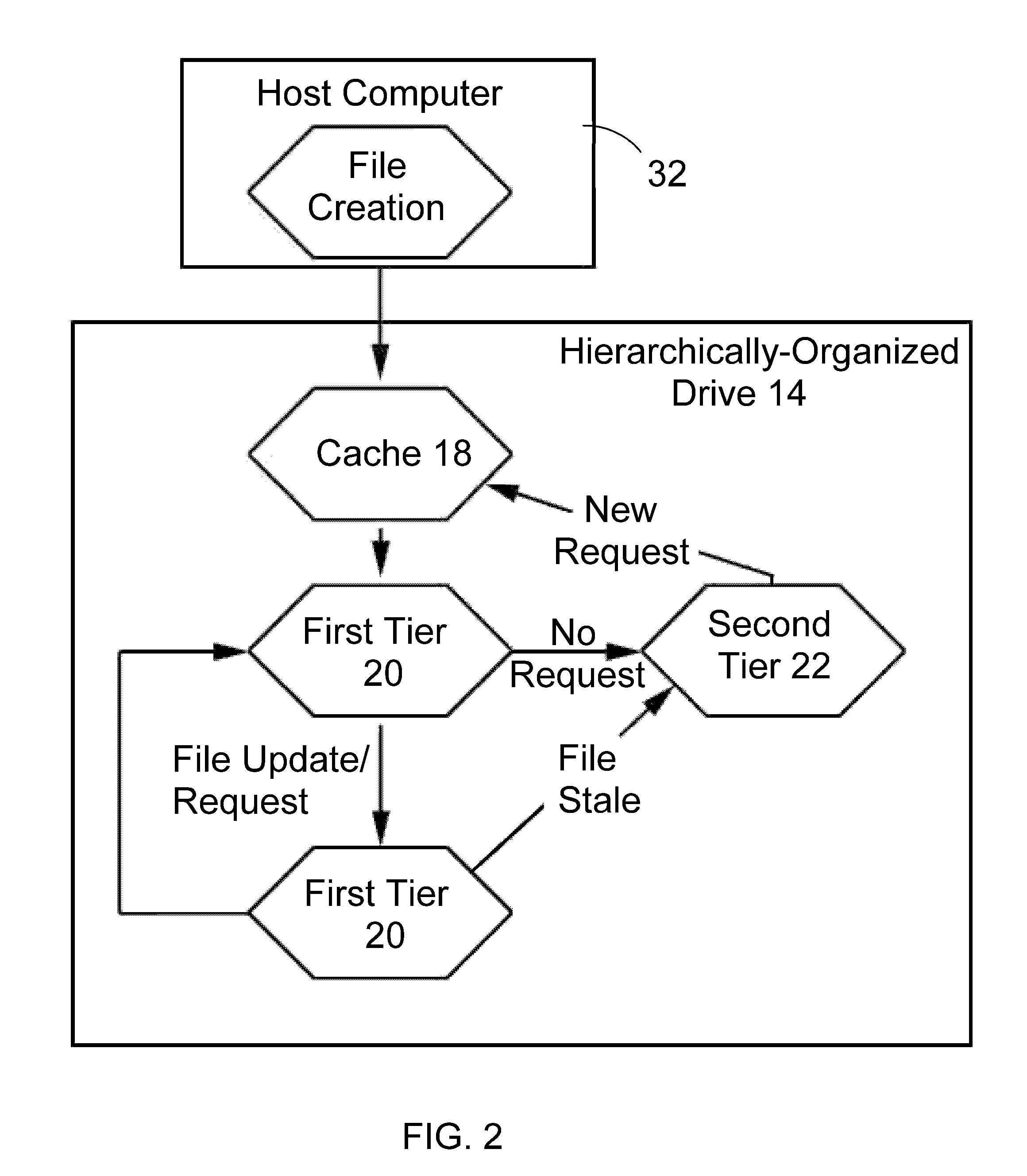Hierarchically structured mass storage device and method
a mass storage device and hierarchy structure technology, applied in the field of computer memory systems, can solve the problems of low performance, low price of ultra-high capacity storage, and high cost compared to nand flash, and achieve the effects of reducing access times and write endurance, high write endurance, and fast access times
- Summary
- Abstract
- Description
- Claims
- Application Information
AI Technical Summary
Benefits of technology
Problems solved by technology
Method used
Image
Examples
Embodiment Construction
[0018]FIG. 1 schematically represents a hierarchically-organized mass storage system 10 suitable for use in a computer in accordance with an embodiment of the invention. A host bus adapter (HBA) 12 of the computer is represented as being adapted to interact with control logic on a non-volatile mass storage memory device, referred to herein as a drive 14. The control logic includes a controller 16 configured to access a volatile cache 18 and multiple discreet domains or tiers of memory, represented in FIG. 1 by first and second tiers 20 and 22 of memory containing arrays of non-volatile memory devices 24 and 26, respectively, on the drive 14. Memory technologies used within the tiers 20 and 22 are preferably solid-state memory devices, though other technologies are also possible, for example, microelectromechanical systems-based solutions and nanoelectromechanical systems. The non-volatile memory devices 24 and 26 of the tiers 20 and 22 are preferably different, such that the non-vol...
PUM
 Login to View More
Login to View More Abstract
Description
Claims
Application Information
 Login to View More
Login to View More - R&D
- Intellectual Property
- Life Sciences
- Materials
- Tech Scout
- Unparalleled Data Quality
- Higher Quality Content
- 60% Fewer Hallucinations
Browse by: Latest US Patents, China's latest patents, Technical Efficacy Thesaurus, Application Domain, Technology Topic, Popular Technical Reports.
© 2025 PatSnap. All rights reserved.Legal|Privacy policy|Modern Slavery Act Transparency Statement|Sitemap|About US| Contact US: help@patsnap.com



